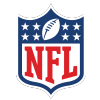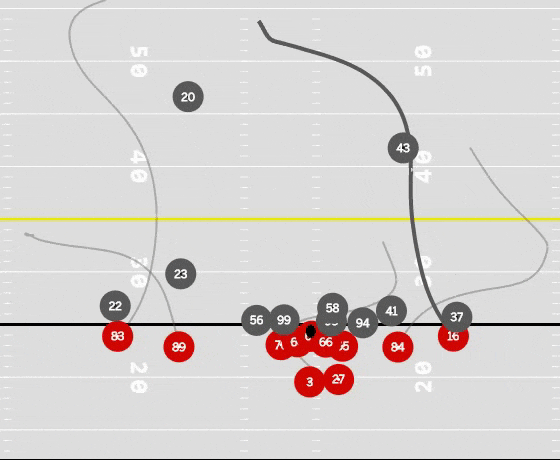Tyler Lockett might be the NFL's most underused superstar.
Though traditional box score statistics reveal that the Seattle Seahawks' wide receiver broke out in 2018 with 57 receptions for 965 yards and 10 touchdowns, those stats fail to capture the full ridiculousness of his season.
Let's start here: Lockett was arguably the most productive receiver in the NFL from an efficiency standpoint. His 13.8 yards per target not only led all players with at least 50 targets, but it was more than two yards better the next-best player in the category (Mike Evans at 11.0) and was light years ahead of other elite receivers such as Tyreek Hill (10.8), Julio Jones (9.9), DeAndre Hopkins (9.6) and Michael Thomas (9.6), per NFL Next Gen Stats.
Lockett's 81.4% catch rate is impressive enough on its own (No. 2 among WRs with 50 targets), but the context of it is preposterous. Thomas, the leader in the category at 85%, attempted to catch passes that averaged 7.7 yards downfield. Lockett's averaged 13.5 yards downfield.
According to NFL Next Gen Stats' expected completion probability -- which takes into account factors such as whether the QB was under pressure at time of throw, air yards and receiver separation at time of pass -- Lockett had an expected catch percentage of 61.3%. That expected catch rate takes into account Lockett's separation, which is above average after accounting for how deep his targets are. His actual catch percentage was 20.1 percentage points above expectation, the highest differential among 50-target wideouts.
The next best in the category is Thomas (plus-16.2 percentage points) but again, Lockett's targets came much farther downfield. That is taken into account when determining catch expectation, but isn't reflected in the value of those catches above expectation. Every percentage point of catch rate above expectation is worth more for Lockett than it is for Thomas.
If we combine air yards with completion percentage above expectation for every target, we can find every player's completed air yards above expectation and completed air yards above expectation per target. It's no surprise that Lockett exceeded expectations on a per-target basis more than anyone else, but what's remarkable is that even his total completed air yards above expectation was best in the league. Check out the numbers:
Below is a plot of each of Lockett's 15-plus air-yard targets, with the arrows indicating where he ran between the time the ball was released and its arrival. What's noticeable right away, besides how many catches (red) there are for deep passes, is that Lockett has two clear clusters of routes: down the right sideline and across the field from right to left.

NFL

Tyler Lockett's targets last season that were at least 15 yards downfield. Red lines were completed passes, blue lines were incomplete. The arrow depicts the area covered by Lockett from the moment Russell Wilson threw the ball to the time of ball arrival. Information via NFL Next Gen Stats.
But the inverse, crossing routes from left to right, are missing. That was surprising because with a right-handed scrambling quarterback like Russell Wilson, I expected plenty of improvised routes from the left to the right. Part of the reason those routes are missing is because Lockett lines up on Wilson's right 62% of the time. But the other factor is that Wilson is willing to make unconventional throws, running to the right and throwing to the left anyway, like on this pass to Lockett against the Rams in Week 10, shown in an animation courtesy of NFL Next Gen Stats:

This brings us to an important point about Lockett's numbers: We can't isolate them from Wilson. Expected completion percentage is based on contributions from both receiver and quarterback, and Lockett benefits from playing with one of the best deep-ball passers in the league. Still, it's hard to fathom that Lockett could put up his impressive numbers without playing exceptionally well himself. For comparison, Doug Baldwin recorded 58 air yards above expectation last season on three more targets than Lockett.
Ultimately, the credit distribution between Lockett and Wilson is immaterial to the fact that the Seahawks used them way too infrequently, at a rate that was almost criminal. Lockett was thrown to only 70 times in 2018 and was targeted on only 17% of his routes, below the target-rate average of 21% among wide receivers who ran at least 300 routes. What makes it worse is that the Seahawks dropped back to pass at a lower rate than every other team in the league, seemingly in part due to a misguided belief that more running leads to more winning.
Seattle needs to make what should to be an obvious adjustment to its 2019 offense -- throw the ball more often, and specifically, throw it to Lockett.

